Sep 11, 2025
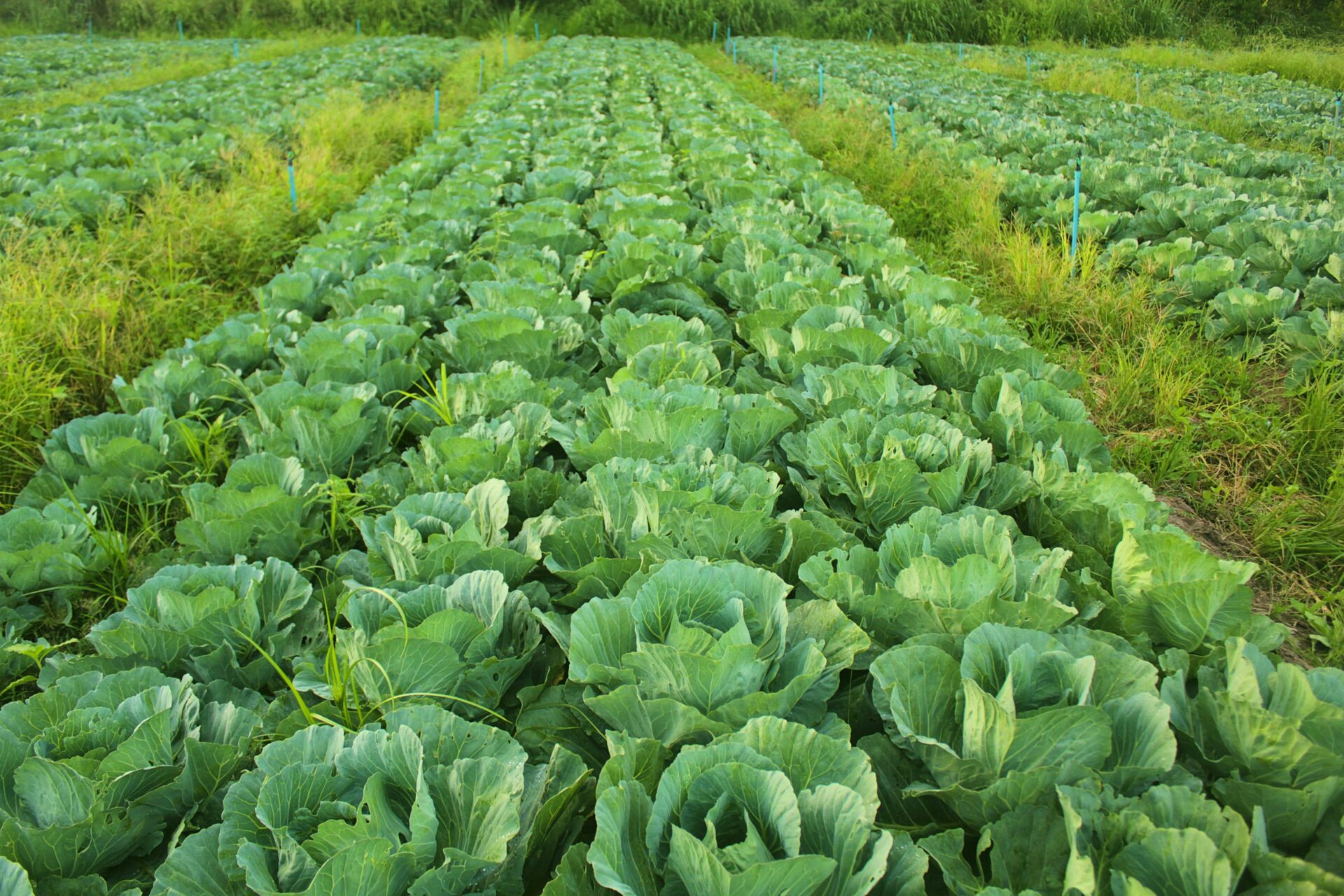
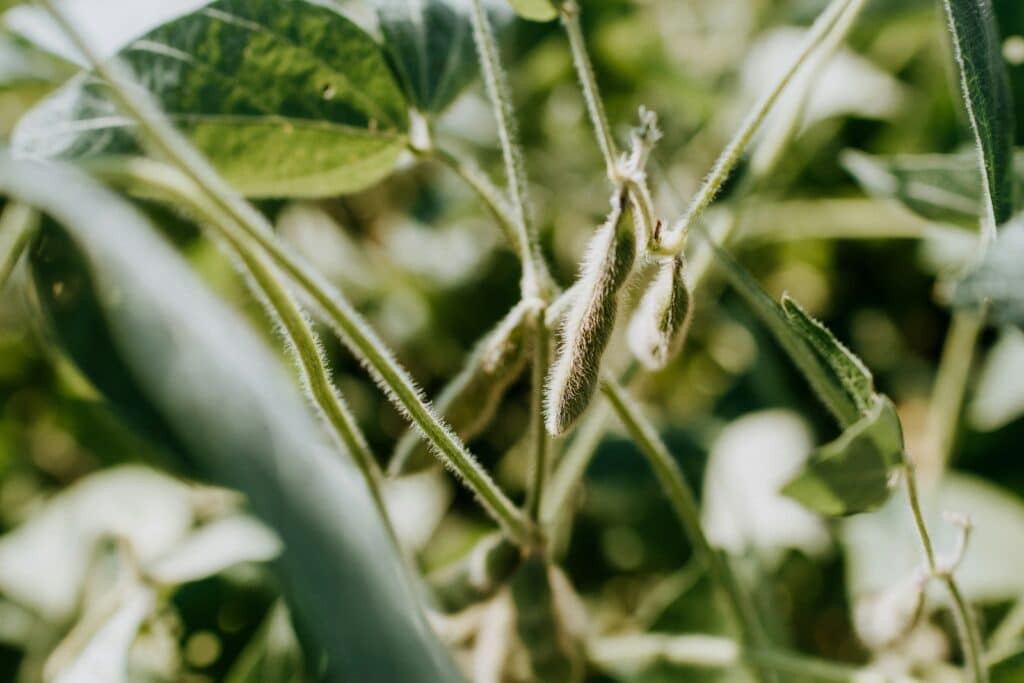
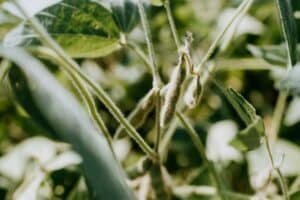
A soybean seed treatment is an investment to either protect seeds from the worst-case scenarios, or to help the seed reach its full potential. Increasing the number of pods and bushels per acre starts with increasing seed germination and emergence rates.
Yet, no grower wants to invest in a seed treatment they don’t need and hurt their bottom line.
While investing in a seed treatment may feel like a gamble, the reality is, once you recognize the signs that you may need one, you’ll be making an educated decision to protect your yields. Seed treatments aren’t about luck, but rather about carefully considering gathered evidence.
Here’s everything you need to know about soybean seed treatments and 11 signs your crops could benefit from a seed treatment.
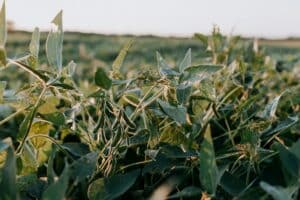
When it comes to soybeans, yield is correlated to nodes per acre (plants per acre x nodes per plant). The pods per node, seeds per pod and seed weight must also be taken into account.
To increase nodes, some growers will reduce row spacing, plant earlier or add a seed treatment application.
Seed treatments are materials that are added to seeds before planting. These materials are biological, physical or chemical agents that adhere to the seed. Each has a unique mode of action to protect and improve the establishment of crops, though there are many seed treatment combination options for growers.
The soybean seed treatment plan that’s right for your crops is often determined by the conditions you’re planting into and your field’s history.
Usually seed treatments only support seeds during the first few weeks of planting.
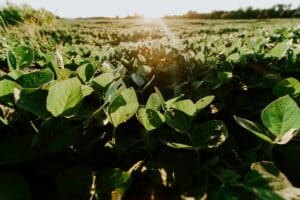
The main types of seed treatments are fungicides, insecticides, nematicides, biologicals and additives. Some of these categories do have cross over (like inoculants, which are biological additives).
Fungicides can protect your soybeans against seedborne and soil-borne fungal pathogens. If your fields have a history of diseases, a fungicide seed treatment could protect your crops when they are their most vulnerable to an attack.
There are two kinds of fungicides, protectants (contacts) and systemic. Protectants are only effective at defending your crops on the seed’s surface. Systemics are absorbed into your emerging seedling and inhibit or kill any fungus inside your crop. Systemics have a longer residual activity compared to protectants.
Growers with a history of fungal seedling disease on their farm should consider a fungicide seed treatment when planting to protect soybean seeds from lurking threats.
Insecticides are ideal for stopping early season insects that attack your seeds – yet they don’t last forever or protect your crop into maturity. Insecticides can protect soybeans before the V2 growth stage and stops plant injury, stunting, delayed emergence or stand loss.
Like fungicides, insecticides mode of actions are systemic or protectants (non-systemics).
For growers who know they have a high nematode populations, nematicides can protect seedlings from nematode root damage. These can be chemical or biological agents that cause paralysis when your crop comes in contact with plant-parasitic nematodes.
Think of nematicide as one additional nematode management tool, not as a silver bullet. Nematode resistant varieties and crop rotation is still considered best practice for managing nematodes.
Before applying, submit a soil sample to a nematode testing laboratory to find out if nematode populations are in a range where seed treatments could be beneficial.
Biological seed treatments are a way to reduce crop stress and improve your bottom line. Some of the different types of biologicals include inoculants, fungicides and nematicides.
Biologicals are unique because it is a living seed treatment. For example, soybeans form a symbiotic relationship with soil bacteria, like Bradyrhizobium japonicum. The bacteria forms nodes on the roots to biologically fix atmospheric nitrogen into plant-available nitrogen.
Be careful when applying biologicals with other seed treatments, as other types of seed treatments can inhibit the viability of biologicals.
Additives could be an inoculant, biostimulant or additional nutrients to support early-season growth. This category also includes enhancements, like dyes or coatings.
One example of an additive is PhycoTerra ST, which feeds beneficial microbes in the spermosphere.
The spermosphere is a 2-12-mm area around the seed and your crop’s first interaction with the soil. Adding a carbon-based seed treatment to your seed supports microbes in the spermosphere, which in turn supports seed germination, early vigor and more. Our trial results have found a +3bu/acre and a 30:1 ROI on soybeans.
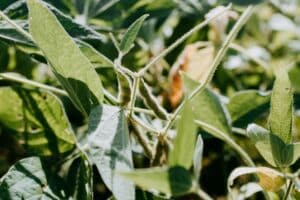
Some of the most common threats to soybean emergence include:
All of these can be hindered or stopped with a comprehensive soybean seed treatment.
Note: Cool soil temperatures can also be a threat to soybean emergence.
A seed treatment may not be necessary for every soybean grower. Yet, most growers could benefit from some type of seed treatment. How can you determine if you’re a grower who should be considering a seed treatment?
Here are 11 signs you need a seed treatment the next time you plant soybeans.
Note: These are just signs and suggestions. Before applying any seed treatment, we recommend you work with a trusted advisor and take a soil test to make the most of your investment.
When a grower plants early, there is an increased risk of wet, cool soil conditions which are favorable to seedborne and soilborne pathogens.
To avoid losing stand, consider a fungicide application with an additive. The fungicide will help keep pathogens at bay, while the additive can help the seed germinate and emerge by reducing abiotic stress.

Often planting early means your seeds will be up against cold and wet conditions. Yet, some springs feel like a never ending winter – and sometimes you just need to get your seeds in the ground.
Other growers may also be up against a history of flooding in the spring, regardless of the temperature.
Like with early planting, consider a fungicide and an additive to support your seed when planting into less-than-ideal conditions.
Some years you may be looking to minimize your input cost while maximizing your yield potential. If that’s the case, planting a lower seeding rate (under 140,000 seeds per acre) could provide a higher return on investment… if most of your seeds make it.
To help ensure seed survival, consider an additive like a carbon-based microbial food. Plants with less stress from environmental factors will have an increased performance potential, including improved emergence, vigor and stand.
If your field has a history of disease or pests, including fungus outbreaks or plant-parasitic nematodes, it’s a good idea to invest in a proactive seed treatment. It’s an easy way to learn from the past and protect your seeds as soon as they’re in the ground.
High clay soils and high sand soils are two sides of the same coin in that they can both have poor drainage. High clay soils retain too much moisture and can cause soybean seeds to become soft or rot. Sandy soils drain water away too quickly and may not provide enough moisture for seed germination.
Any situation with poor drainage and inadequate moisture levels causes stress on your seeds. To help them manage their abiotic stress, consider an additive like a carbon-rich microbial food.
There could be many signs your fields have poor soil health, like compact soil or high salinity levels. Often, the biggest cause of poor soil health comes from an inactive or dormant microbiome.
Soil microbes are integral for nutrient cycling, disease suppression, improving soil structure and more. If your field’s have poor soil health, you will likely need to do more than just a seed treatment to support your seeds.
Yet, a good place to start when planting is feeding beneficial microbes at the spermosphere. This will help support the microbe’s closest to your seed and in turn, your seed’s longevity.
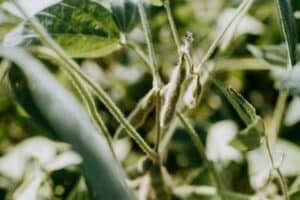
Pest and diseases often hide in high surface residues or decomposing organic matter. Green cover crops or animal manure may have seemed like a great idea to add to your fields for your future crops until a pest decimates your seeds.
Take note of what pests or problems could be lurking in your soil and prepare your seeds for the threat before they’re planted.
This is also a good idea if you have a tight crop rotation or are planning a second-crop in a double-crop system. Your first crop could be carrying a pest, so plant your soybeans with extra protection.
Some soybeans are more susceptible to soil-borne diseases and insects than others. Some states also carry a greater risk of disease or pest spread if surrounding farms experienced an outbreak. Avoid highly susceptible varieties, if possible.
If those varieties are your only choice, consider a seed treatment to protect seeds against their biggest threats.
If you’re planting your soybeans into a field after it was pasture or grasslands, there is a chance threats could be lurking. Without a previous planting of soybeans or recent field notes, you may want to give your seeds an extra layer of protection with an insecticide or fungicide.
If you’re planting soybeans for the first time, or in a field that has gone several years without soybeans, you may want to consider adding an inoculant to support nitrogen fixation in your fields.
Was last year’s emergence unexpectedly slow? Was there an uneven seed germination? If so, you may want to consider an additive to increase emergence, seed germination and stand amongst your soybeans. To do this, look for a carbon-rich microbial food to feed soil microbes.
When soil microbes are fed and active, they can support your seed’s growth.
Before buying multiple seed treatments to protect your crops from everything, consider your pest history, crop rotation history and planting conditions. Use the advice of a trusted advisor to build a seed treatment to achieve the best return on investment.
While it’s smart to be prepared, consider your bottom line in tandem when investing in seed treatments.
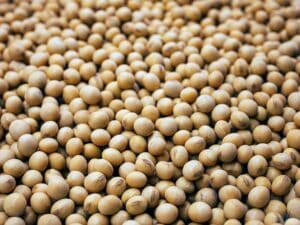
If you found this blog post too late, and your seeds are already struggling, you can always try reactive measures to save your seeds. Sometimes the easiest way to guarantee a yield is to simply replant.
This is the case with soybeans that experience slow or uneven emergence. Some common factors that can lead to uneven or delayed emergence include:
While it’s always better to be proactive and avoid issues before they arise, sometimes pivoting and replanting is unavoidable. Especially when an undetected pest arrives for the first time. Note any unexpected changes in planting and pests to refer to when making a seed treatment plan next year.
Seed treatments can be a beneficial way to support seeds and manage threats because it’s a very small, concentrated application applied directly to the seed. Your pesticide or fungicide applications aren’t washed into waterways, which can happen with some spray applications.
It can also reduce your pesticide cost through labor and diesel savings. You won’t have to do a pass in your field to protect your crops from threats upon emergence.
By reducing spray application use for early season pests, you’ll also be protecting some pollinators who are sensitive to insecticides. Due to the seed’s coating, pollinators won’t come into contact with chemicals that could harm or kill them. Active pollinators are essential for any successful farm.
A trusted crop advisor is the only person who should tell you if a soybean seed treatment is a good idea or not. That said, if you notice some of the signs that you need a seed treatment, or recognize the situations that could impact your yield potential, you can start the conversation.
Seed treatments do require growers to plan ahead, but often it’s well worth it when it comes to an increased yield potential. Seed treatments can help solve problems in your field, and protect your soybeans from potential threats while supporting their growth.
If you see the signs, don’t ignore them.
Also, if you noticed any of the signs above consider checking out our award-winning seed treatment, PhycoTerra ST. It’s easy to apply to any existing seed treatment program and delivers a notable, consistent return on investment for growers.
Learn more about how PhycoTerra ST could support your soybeans as a part of this year’s seed treatment.
Note: All trial data is current as of blog posting. For the most up to date trail data, please visit our trials page.